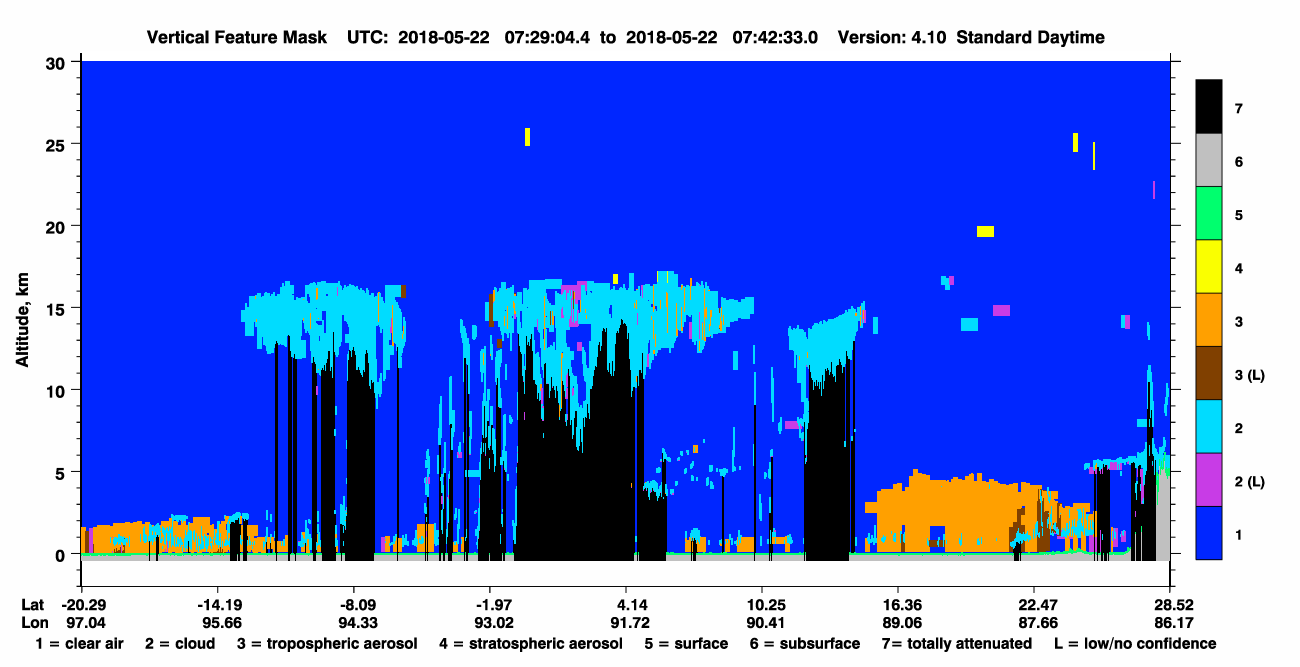The main objective of Cloud-Aerosol Lidar and Infrared Pathfinder Satellite Observation (CALIPSO) satellite is to provide the vertical distribution of different types of aerosols (airborne particles) and clouds at global scale based on their optical properties. This course will focus on different types of aerosol and cloud data products (such as aerosol/cloud layer and profile products) available from space-borne Lidar called Cloud-Aerosol Lidar with Orthogonal Polarization (CALIOP) onboard CALIPSO satellite. These data products have various applications in monitoring the Earth’s weather, climate and air-quality. More information about CALIPSO satellite can be found at:
CALIOP measures backscattered light (at 532 nm and 1064 nm wavelengths) from aerosol and cloud layers present in the Earth’s atmosphere. With the help of different algorithms, this information is used to detect aerosol/cloud layers and also to derive optical properties (such as backscattering coefficient, extinction coefficient, depolarization ratio, colour ratio, layer optical depth) as a function of altitude along the CALIPSO orbit track. These properties are then used to discriminate aerosols from clouds, ice/water phase identification and to further classify into aerosol subtypes (clean, polluted dust, smoke, etc.) and cloud sub-types (cirrus, altocumulus, deep convective, etc.).

Vertical Feature Mask product of CALIOP along its track showing vertical distribution of aerosol and cloud layers.
(Source: https://www-calipso.larc.nasa.gov/data/BROWSE/production/V4-10/2018-05-22/2018-05-22_07-15-36_V4.10_2_6.png)
Detailed information about various CALIOP data products and Algorithm Theoretical Basis Documents (ATBD) are available at https://eosweb.larc.nasa.gov/project/calipso/calipso_table.
Basic information on aerosols and clouds
This section will introduce you to aerosols and clouds in the Earth’s atmosphere. You will learn how aerosols and clouds impact our Earth’s weather, climate and air-quality. In addition, it will allow you to understand why and how do we monitor the distribution of aerosols and clouds at global scale. Following articles will help you in understanding the fundamentals of aerosols and clouds:
